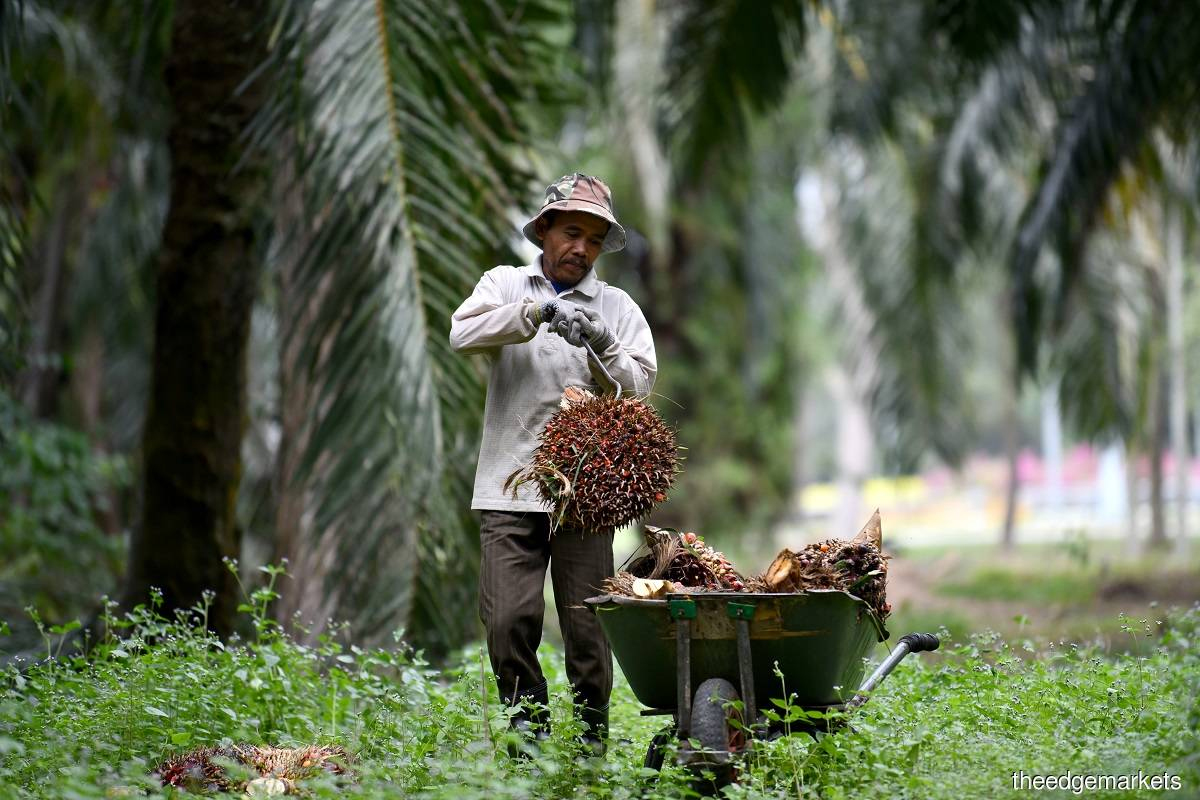Palm Oil Production Seen Surging in Malaysia as Workers Return

Palm oil supply in Malaysia is set to soar as a labor crunch eases in the world’s second-biggest producer, paving the way for a bumper crop in the second half of the year, said a senior plantation executive.
The return of foreign workers to plantations has accelerated harvesting, while better oil extraction rates are improving crude palm oil production, said IOI Corp. Plantations Director Sudhakaran Nottath Bhaskaran. Good rainfall over the past two years is also boosting the formation of fresh fruit bunches, he said during a field visit to an IOI estate in Johor.
“Palm oil production is going to pick up speed from now onward until it reaches a peak around August to September,” Sudhakaran said. “Crops are rapidly going up and we expect a very strong peak this year.”
Malaysia produces more than 20% of the world’s palm oil — used in consumer goods ranging from foods to cosmetics — but has struggled to bring back the overseas workers it normally relies on despite easing Covid movement curbs. The brighter outlook for production has helped put pressure on prices, which are trading around a 30-month low after soaring to a record last year.
Output in Peninsular Malaysia and Sabah, which together make up almost 80% of the country’s total supply, may jump at least 25% in the second half of the year compared with the same period in 2022, Sudhakaran said. The rapid increase in yields is already evident, with total Malaysian production expected to climb by around 18% in May from a month earlier, he said.
The return of overseas workers is a welcome relief for the nation’s palm oil plantation companies after the chronic labor shortages meant estates lost an estimated 20 billion ringgit ($4.4 billion) last year.
IOI is Malaysia’s second-biggest palm oil planter with 96 estates located across the northern Borneo region of Sabah and in Peninsular Malaysia. The company now has an adequate number of workers on the plantations, which has allowed it to improve harvesting rounds to once every 10 to 15 days, compared with about 45 to 60 days last year, Sudhakaran said.
Although the industry remains wary over an El Niño later this year, the weather event is likely to be experienced only from September-October onward, with a minimal immediate impact on production, Sudhakaran said. Depending on the severity of the drought, any effect on palm yields may only be seen in six to nine months’ time, and again in 20 to 22 months, he added.
Read also
Wheat in Southern Brazil Impacted by Dry Weather and Frosts
Oilseed Industry. Leaders and Strategies in the Times of a Great Change
Black Sea & Danube Region: Oilseed and Vegoil Markets Within Ongoing Transfor...
Serbia. The drought will cause extremely high losses for farmers this year
2023/24 Safrinha Corn in Brazil 91% Harvested
Write to us
Our manager will contact you soon



